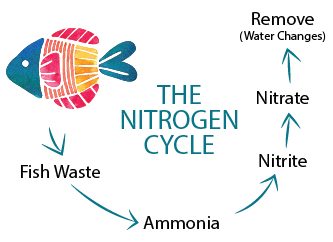Setting Up A Saltwater Aquarium
Setting up a saltwater aquarium can seem intimidating and the list of must-do’s can be daunting at times. Especially when you are a new saltwater hobbyist and aren’t quite sure how or where to begin. The size of your tank, the lights, the filtration, pumps, sand bed, rocks, fish, and corals are all things that should be considered when setting up a new tank. Doing this process properly at the beginning will save you a lot of time, money, and ensure the health of your aquarium.
If you haven’t yet selected a tank, be sure to read “Selecting a Saltwater Fish Tank” for important things to look at.
Below is a Checklist of Things to Consider When Setting Up Your Saltwater Tank:
Rock & Sand:
The first things you will likely add to your tank will be the rocks and the sand. They may not seem like much but they play an important role in the ecosystem of your tank. They filter the water, create hiding places for your fish, and will serve as the canvas for your aquarium. Both sand and rock can be purchased wet or dry but you want to make sure it is LIVE rock and sand. This is important because it will help your tank cycle and speed up the process so that you can start enjoying it sooner!
- Sand: Add the sand first and try to create a sand bed that is approximately 2-3 inches. There are many different types of sand or gravel to choose from, but it is really personal preference. However, the courser the material, the easier it is to clean with a siphon vacuum.
- Rocks: How you place the rocks in your aquarium will define the overall appearance of your tank. Spending a little extra time to get this right can really make the overall tank look great. The main thing to consider is placing the rocks far enough away from the glass. Cleaning will be easier while also leaving enough room on the sand bed plate or brain corals.
Proper Lighting:
Proper lighting is essential to the growth of corals, plants, and certain species that require photosynthesis for food. Without good lighting, many corals may not have their vibrant colors or may even fail to thrive at all. There are a number of excellent LED and T5 light fixture to choose from but ultimately, the goal is to mimic nature as closely as possible. To achieve this, look for something around 10,000 lumens per square foot. It’s also important to have a good mixture of both daylight and actinic blue lights.
Sump Tank Filtration:
A sump tank can make a good tank a great tank simply because it increases the amount of water flowing through your tank and also removes more waste from the system. For more information, visit “Setting up a Saltwater Sump Tank.”
Powerhead:
Powerheads circulate the water within your fish tank. A large saltwater aquarium will likely require two or more powerheads depending on their strength, while nano tanks may only require one. They should be placed near the surface of the water to help aerate the aquarium. A good way to test if you have enough pumps, is to check the water temperature on opposite sides of the tank.
Water Chemistry:
Once all the steps have been taken to setup your saltwater aquarium, start cycling it before you add any corals or too many fish. Most people begin with a couple small fish whose waste will start the natural cycling process of ammonia, nitrite, and nitrates. Test these levels using a kit like API Marine’s saltwater master test kit. Once your nitrates have dropped down, then slowly begin adding fish and starter corals over time.
Adding fish and corals too quickly can amount to failure. It can be a costly mistake. Be patient and allow your saltwater aquarium to cycle for a few months.Find more information on Coral by viewing our other articles.
Educating yourself on each of these processes will be well worth the investment. Good water parameters, sufficient lighting, and filtration will give the beginner aquarist a good start for a successful saltwater aquarium.
















